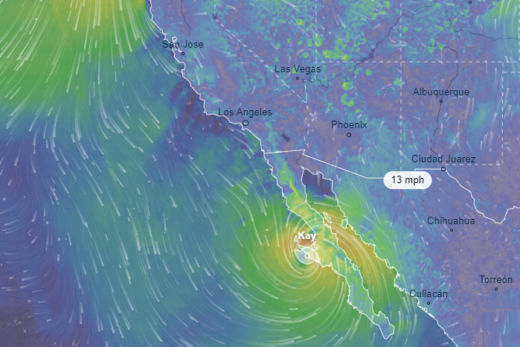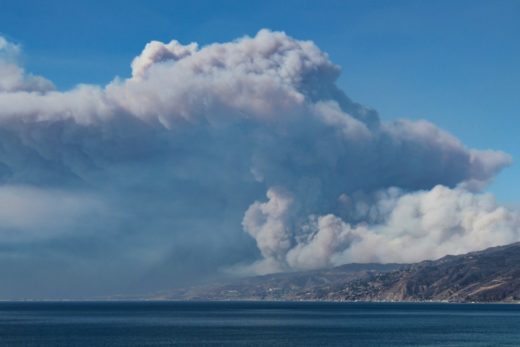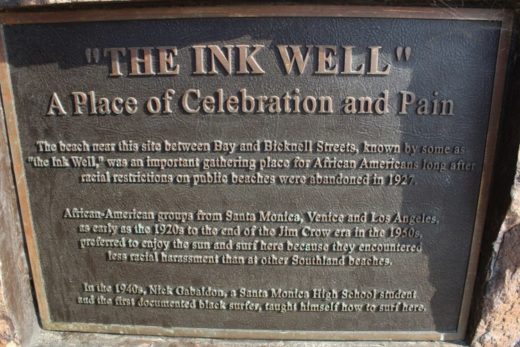During the past six weeks, California has arguably changed faster than at any time in history. We started with what seemed to be a concerted effort to eliminate the invader so that we might return to “normal”. But an ominous reality has set in. Now, two months into the lock down, our combined reactions to this complicated and often mysterious COVID-19 remind us of the extreme diversity and divisions within our Golden State as we gradually try to reopen and ease restrictions, recognizing that the virus will remain with us for a very long time.

Some trends could have been predicted. Our initial shelter in place and quarantine efforts that locked us down helped to keep the state’s infection and death rate curves below thresholds that could have otherwise overwhelmed our health care systems and left tens of thousands of sick patients without care. By mid May, our state with by far the greatest population still ranked only 5th in the number of cases. California has avoided the exponential curves, astronomical numbers, and senseless deaths that are too often experienced in the world’s less fortunate communities and countries. This allows most of us to feel lucky and healthy enough to express our empathy for families who have lost loved ones to the pandemic. But the reactions and results, so far, vary dramatically across the state.

After its initial introduction into the Bay Area, the virus spread throughout the state, but it is now impacting, infecting, and killing a much larger proportion of people in working-class families and communities who are also concentrated in our urban areas and some farming communities, and that includes people of color. The elderly (especially those living in nursing facilities) and those with preexisting health conditions (such as diabetes) suffering from inadequate health care are particularly vulnerable. But so are those in service and health care industries who are required to work under conditions likely to expose them to the virus. Working class people of all ages who do not have the financial and technical resources to study or work from home are further marginalized in what was already a two-tiered economy and society. The two Californias become evident again as one set of mainly blue-collar workers are required to return to what may be dangerous public-contact work places to earn their paychecks while another set of mainly white- and gold-collar workers earn their incomes from the safety of their homes. Impacts remain less evident in many more rural counties and communities in far northern and inland California, where less onerous restrictions were frequently first resisted or ignored and then lifted. Big exceptions include a few important agricultural communities and prisons that have experienced dramatic spikes in cases, such as in Tulare and Imperial Counties.

We have also stifled the world’s 5th largest economy and sent millions of workers into unemployment. And so, as we have saved tens of thousands of lives, some are now asking why killing this virus should require killing our economy. How do we reopen safely and efficiently? In classic California fashion, the predominately progressive coastal cities have lined up on the side of safety first, while more conservative rural communities farther inland and north of Sacramento (such as the Jeffersonians) dismiss the threats and barrel full speed ahead into traditional work and routines that will pay the bills. Polarized sides bring their arguments to the forefront, either by shaming those who ignore health risks or by criticizing and attacking government interventions that are perceived to limit their freedoms. Once again, the 40 million people in the most diverse state find themselves at the center of a classic American debate. Are we all community in the same boat that keeps everyone, even the selfish, above water, or is this another opportunity to celebrate our fierce independence and rugged individualism? Regardless, social media has helped to blur some of the geographic boundaries that would otherwise separate these seemingly disparate philosophies, cultures, and communities, statewide divisions that we highlight in our publication.

Here, we explore a popular and controversial example from Huntington Beach. Recent election results suggest that Orange County has shifted away from its ultra-conservative history to become more progressive in culture and politics. But responses to the pandemic lifted some of that traditional stereotyped OC culture back toward the surface in the form of right-leaning protestors who resent any government incursion into their economic lives. Their philosophical bonds with those rural cultures farther inland and north of Sacramento made Huntington Beach a magnet for attracting anyone who wanted to demonstrate their contempt for what they saw as government overreach during the pandemic.

The signs spoke volumes. Animosity toward the sitting progressive Democratic Governor Newsom, libertarians, white nationalists, Trump supporters promoting FOX News and conservative radio personalities, anti-vaccine groups, conspiracy theory believers, pro-gun industry supporters: it was a cast of characters you’ve seen so often in the sensationalist media that thrives on conflict, all converging into a relatively small but raucous crowd in front of the closed Huntington Beach Pier. A couple of them even stormed the closed gates, only to be met by a team of officers who were forced to cart the troublemakers off from the end of the pier. The circus atmosphere included a cacophony of competing bullhorn and loudspeaker noise from people touting their favorite brand of right-wing politics and an army of police officers on foot, horses, and vehicles trying to calm the tension that sometimes erupts between demonstrators and counterdemonstrators. A few of the spectators cheered the protestors on, while a few repulsed passersby were overheard labeling them as “crazy nuts” through their protective masks. The images we share here thrust you into this California scene, while the surrounding activity may be even more telling.

Downtown Huntington Beach streets (especially Main Street) were packed with summer-worshiping crowds soothing their cabin fever in May without facial masks, and open businesses seeming to purposely flout all social distancing and stay-at-home rules. The “no virus threat here” spectacle spread for miles in both directions along the beach where revelers brought their families and friends to swim and surf and relax on the sand, some ignoring official pleas to encourage social distancing and to keep moving. “Surf City here we come” stood in dramatic contrast to beaches and communities in adjacent L.A. County that remained sparsely visited, if not empty, while most of their few mask-clad recreators adhered to social distancing rules and law enforcement occasionally enforced those rules. The two Californias were evident on this same sunny May Saturday afternoon in these adjacent counties during this unprecedented pandemic.

Just as the number of COVID-19 victims grew in May, impatience with the two-month-long lock down was also growing, first spreading from these early epicenters of discontent like a ripple that turned into a wave that might gradually introduce more Californians back to work and play. It is a very different kind of experiment with unknown results among the amazing diversity of communities that make the Golden State. If you are reading this long after May, 2020, you may already know the results, whether this pandemic did permanent damage or if we weathered this storm and came out stronger in the long run.

We have all learned that it is relatively easy to lock the state down to save lives or open it up to save the economy, but as the pandemic drags on, how can we find ways to achieve both goals? These questions and their answers are far more complicated than the shallow, oversimplified media-driven debates. Just as this pandemic is unprecedented, it will take an unprecedented wealth of creative thinking, great minds, hard work, good will, and cooperation to find common ground and move us back into the light. Even in our divisions and tribes, we continue floating together on that same boat.
There is a growing variety of active sites where you can gather information about the pandemic in California. As of May, 2020, the maps and graphics display a wide array of sometimes puzzling trends. Per capita cases are high in Los Angeles and San Francisco Counties, but also in isolated Mono and agricultural Tulare and Imperial counties. Throw in Santa Barbara County and you have the highest per capita counties to date, but the data are changing fast. Each of the following links is a moving target that may evolve, change, or disappear after this story is posted. We include the full addresses to help your research. Good luck in your endeavors to be healthy, wealthy, and wise!
Some useful links:
UCLA Anthropologist Daniel Fessler discusses the flip side of these images by sharing his historical and intellectual perspective about our human dilemma. You’ll need an hour to digest these thoughts:
L.A.Times tracks the virus in California:
https://www.latimes.com/projects/california-coronavirus-cases-tracking-outbreak/
John Hopkins University national maps show confirmed cases and deaths by county. Zoom in to California counties:
https://coronavirus.jhu.edu/us-map
National Geographic:
https://www.nationalgeographic.com/science/2020/05/graphic-tracking-coronavirus-infections-us/
Google data:
https://www.google.com/search?client=firefox-b-1-d&q=covid-19+maps+California
Orange County (where the images in this story were recorded): https://occovid19.ochealthinfo.com/coronavirus-in-oc




